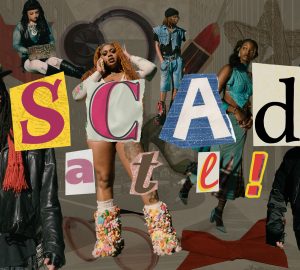Foraging today is a topic that has gained some popularity since the start of the pandemic when people began looking for new and safe hobbies.
A part (and probably at the front) of the foraging movement is Alexis Nikole, based in Columbus, Ohio. Nikole is a social media manager and content creator with an Instagram and TikTok account. She has a large following of over three million on TikTok and over half a million on Instagram.
Nikole’s pages are educational while remaining funny and entertaining. With many series, including seaweed week and the glorious ways you can use mushrooms, Nikole takes her followers along as she forages for berries and teaches about the kinds of trees this world has. Beyond the seaweed and mushrooms, she can turn a plant into a bagel bite and acorns into bacon.
Even if you aren’t cooking with the ingredients in your backyard, Nikole’s pages will teach you how to forage, its history, and its benefits, bringing your soul closer to Mother Nature.
In the United States, foraging by all accounts was a normal thing to do. Early humans were literally called hunter-gathers. Also, to understand the definition of foraging, foraging is not dumpster diving; foraging is collecting foods not grown by man, but that which grows wild in varying spaces.
When the United States was colonized, we first saw limits put on Native American groups that foraged. Right before the Civil War, enslaved people were also avid foragers. After the Civil War, practices were put in place to ensure that foraging could only happen on land owned; if people were foraging on the grounds that weren’t theirs, it was a criminal offense.
Many groups of people were affected by these laws. As a result, the practice of foraging was lost. Today, many foragers are relearning the practice and spreading the knowledge.
Nikole has said she is extremely grateful that her parents were “outdoorsy people.” Hence, foraging is second nature and a way to connect to the past legacies of Black people and Indigenous people in the U.S.
Bringing that old knowledge back into the light is just one of the many ways people of all backgrounds can learn about the past, and Nikole may just be the one to lead us all.
Even a college student in Atlanta can be a forager. It’s a cost-effective and environmentally-friendly way to try new ingredients. So yes, city dwellers can become forgers, but what to do with your finds? What is edible in the streets of Atlanta?
Dandelions and mulberries are among the top finds in the city. Dandelions can be found almost all the time, in sidewalk cracks or next to a church. Mulberries are another plant available in Atlanta; you can find some off the Beltline.
Dandelions, according to foragers like Nikole, are very useful after a good wash. The roots can become tea, the leaves and stems can be added to salads, and the flowers themselves can be turned into a fried fritter (Nikole has a recipe for this on her page).
Mulberries can be spotted by the signature reddish-purple smears they leave on the sidewalk after they get trampled by people. The trees have a reddish bark, glossy green leaves with scalloped edges, and of course, berries that range from white to a deep purple. Mulberries, a sweet fruit, can be used in any baked good or as a topping for your Cheerios.
Though foraging in the big city may seem daunting, baby steps are essential. It’s also important to remember to forage effectively. This means you shouldn’t damage the site or clear out a spot; you want whatever you’re harvesting to keep growing. Nikole and Atlanta sources like the Concrete Jungle are there to help you develop this new hobby.
And in the words of the wonderful Alexis Nikole, “Happy snacking, don’t die!”

























